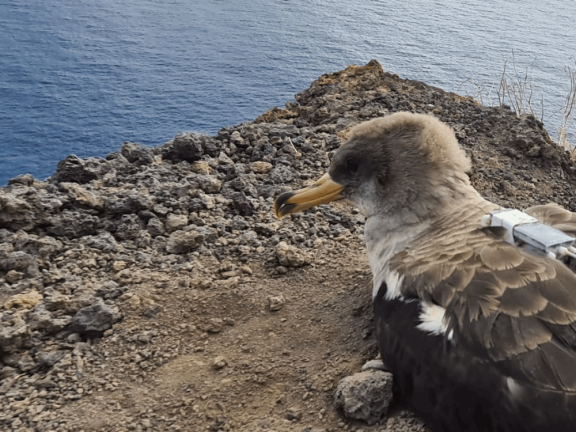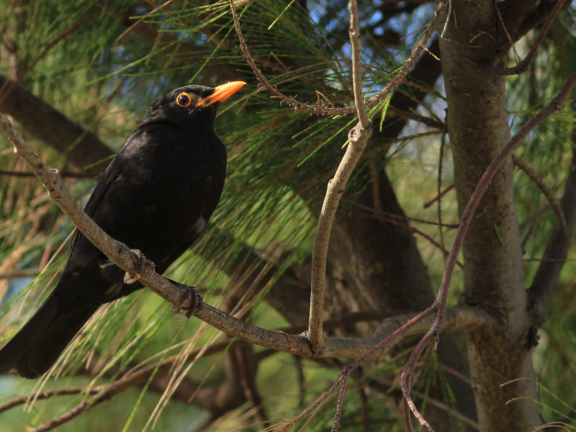In the Azores, nocturnal biodiversity is gaining new allies at sea. The LIFE Natura@night project is implementing solutions to reduce light pollution caused by fishing boats, with a special focus on the impact on seabirds such as cory’s shearwater: a species whose Azorean population represents about 75% of the world population.
The intense and poorly directed lights of the vessels are a silent threat to these birds: they cause disorientation, lead to collisions and strandings, and even affect their behavior on land. Although fishermen do not regularly report collisions, this is because tuna fishing mainly takes place between May and September, when most birds are already adults and tend to avoid light. However, juveniles, which are more vulnerable, remain at risk.
To better understand the problem, 82 surveys were conducted with fishermen using different fishing gear. The results showed that most boats use excessive lighting, with projectors with a color temperature above 6000K, without photometric control and with overly high orientation angles.
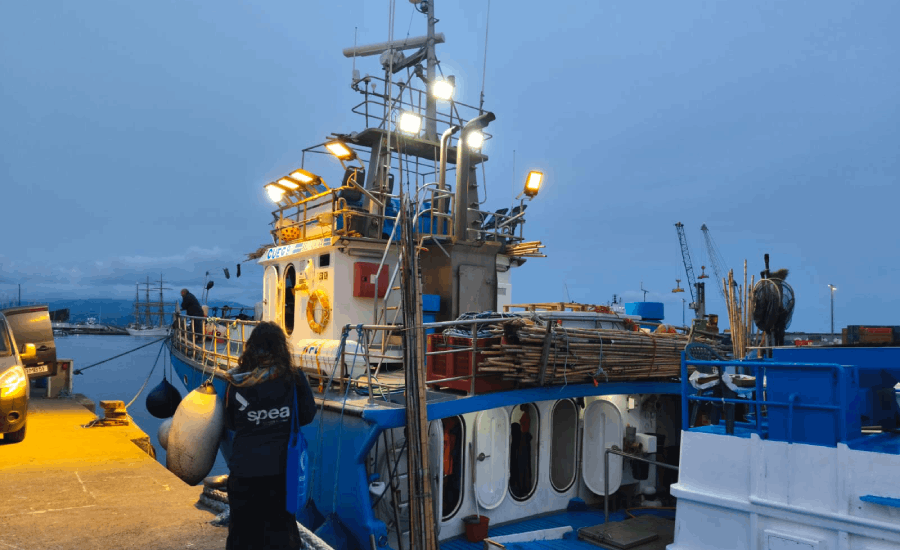
Visit to the Bela Aurora vessel
Faced with this issue, the SPEA Azores team came up with a lighting solution with the following requirements:
- Salt corrosion resistant projectors;
- Color temperature reduced to 2700 K;
- Asymmetrical photometric distribution to avoid light in the upper hemisphere;
- Reduction of light intensity without compromising safety;
- Intelligent light control system, adjustable by zone;
- Start with a pilot project to assess the impacts.
Two pole-and-line tuna boats, the Pepe Cumbrera and the Bela Aurora, were equipped with eight asymmetrical 2700 K and 240 W projectors, with power adjustable directly from the bridge. Since February 2025, these vessels have been operating with the new smart lighting system. To date, feedback from the ship’s captains has been positive regarding the measures implemented. The changes are now being evaluated based on comparative data before and after installation, with a view to validating the effectiveness and replication of the solution on more vessels.
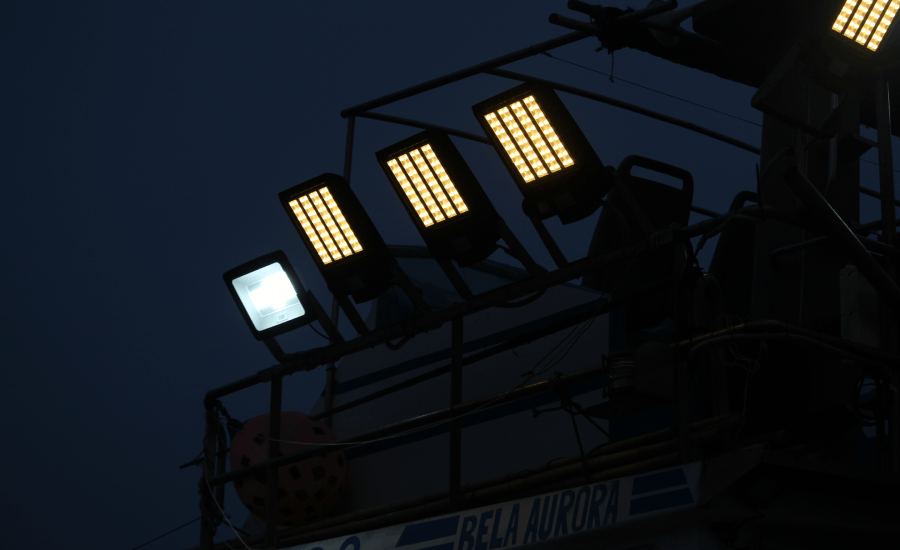
New projectors installed on the Bela Aurora vessel
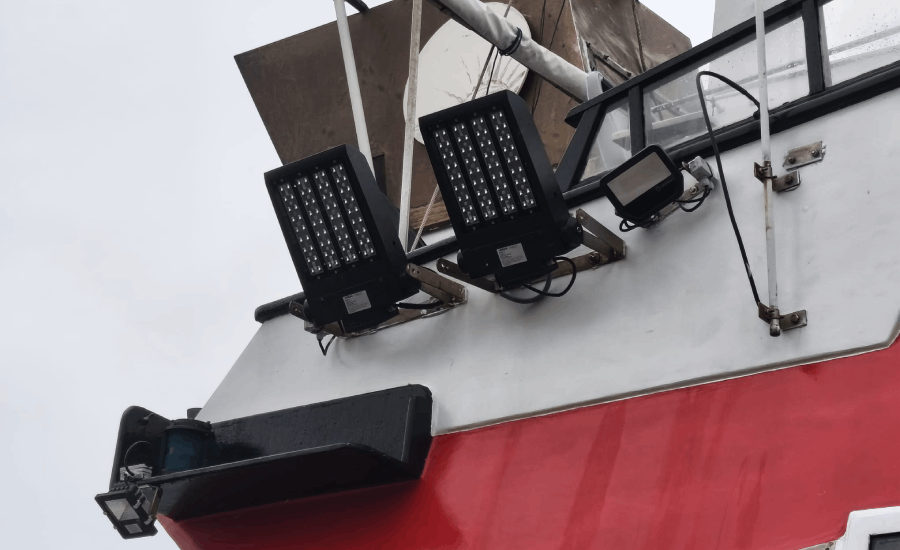
New projectors installed on the Pepe Cumbre vessel
Fishermen’s lack of knowledge about the impacts of lighting and the use of low-cost solutions remain challenges to the widespread adoption of more responsible practices. The involvement of fishing communities, specialized technical support, and a willingness to innovate are identified as key elements in ensuring that the sea remains a place of life, rather than a threat, for nocturnal biodiversity.
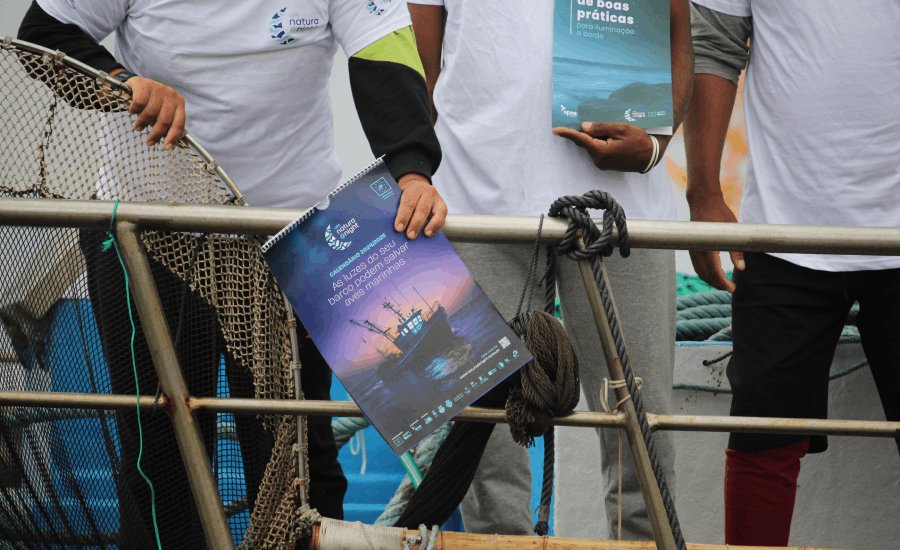
Visit to the Bela Aurora vessel



